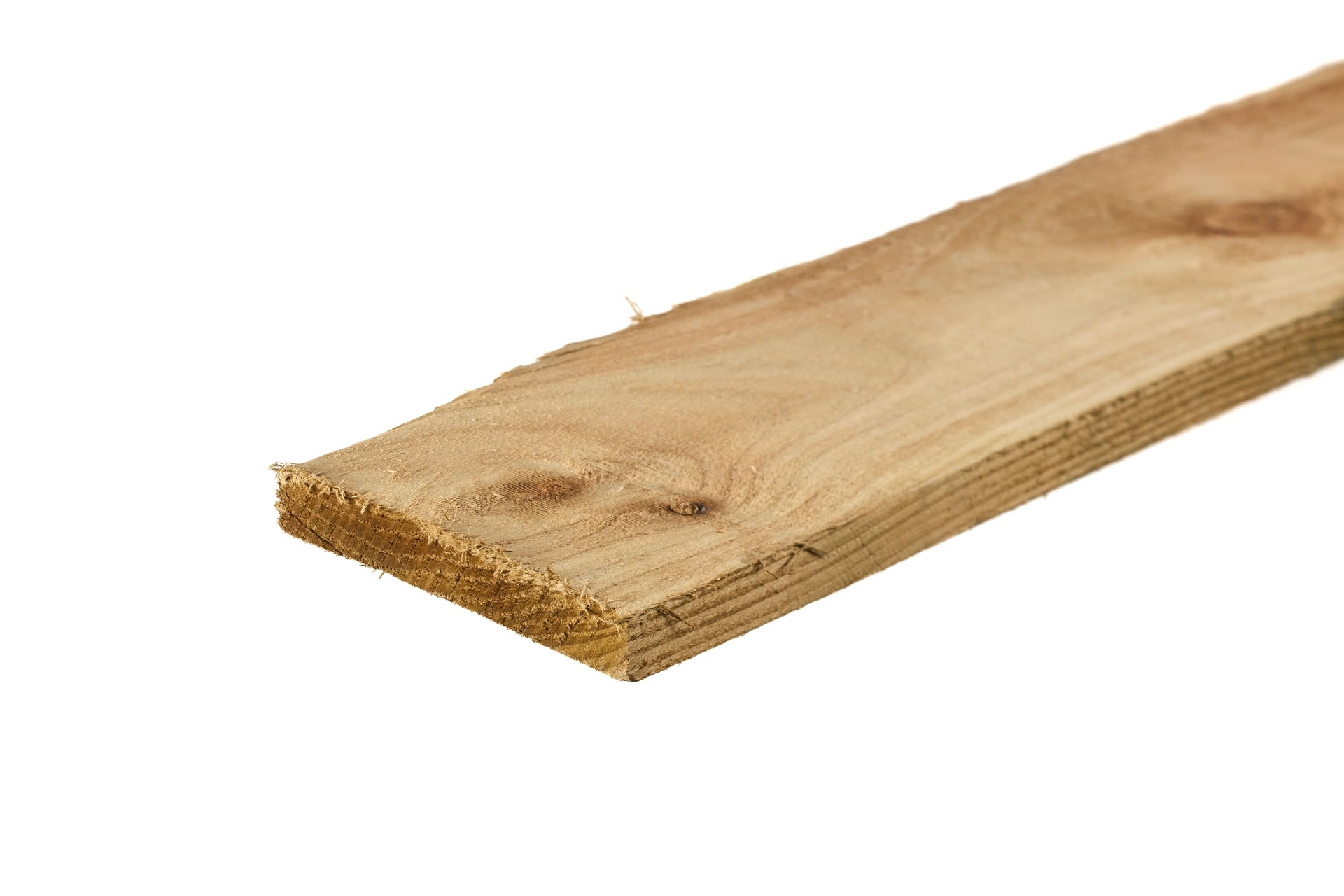Gravel Boards
(19 Products)Gravel boards are flat, horizontal panels installed at the base of a fence, positioned between the fence panels and the ground. They protect the fence by preventing direct contact with soil and moisture, which helps reduce the risk of rot, decay, and damage caused by dampness or ground movement. Additionally, gravel boards contribute to the longevity of the fencing by keeping the panels elevated and enhancing their structural integrity. Typically made from concrete (highly durable and moisture-resistant) or treated timber (more affordable and versatile), gravel boards are available in various lengths, widths, and finishes to accommodate different fencing requirements. They are commonly used in gardens, boundary fencing, and areas prone to high moisture or uneven ground.
What Is A Gravel Board?
A gravel board is a protective component installed at the base of a fence to shield panels from soil and moisture. Positioned between the fence panels and the ground, it creates a barrier that helps prevent issues like rot and decay caused by prolonged exposure to damp conditions.
Gravel boards come in durable materials such as concrete, known for its moisture resistance, and treated timber, valued for its versatility. They are available in various sizes to suit different fencing requirements and are particularly useful in enhancing the durability, stability, and lifespan of fencing structures while offering added height or support when needed.
Where Are Gravel Boards Used?
Gravel boards are commonly used in residential, commercial, and industrial fencing projects where the ground conditions pose a risk of damage to the fence. Specific applications include:
- Garden Fences: Protect fence panels from soil, moisture, and plant growth.
- Boundary Fencing: Ensure longer life and enhanced structural integrity.
- Sloping Ground: Hold back soil and create a levelled base for fence installation.
- High-Moisture Areas: Provide a protective barrier in damp or wet environments.
- Decorative Fencing: Enhance the overall appearance and provide additional height.
Gravel Board Benefits
- Durability: Concrete gravel boards resist moisture, rot, and decay, ensuring a longer lifespan for your fencing.
- Protection: Acts as a barrier to prevent damp and moisture from affecting fence panels.
- Enhanced Strength: Adds stability and strength to the entire fence structure.
- Longevity: Keeps fence panels elevated, reducing the risk of soil damage.
- Ease of Installation: Designed for simple and efficient installation in a variety of fencing projects.
- Range of Choices: Available in various materials, sizes, and finishes to suit specific needs.
- Aesthetic Appeal: Improves the appearance of fencing by creating a clean, professional finish.
- Cost-Efficiency: Reduces the frequency of fence panel replacements, saving money over time.
Frequently Asked Gravel Boards Questions
What Is The Purpose Of A Gravel Board?
The purpose of a gravel board is to protect fence panels from moisture, dampness, and soil contact, which can lead to rot and decay. They also provide additional height and enhance the structural stability of fencing.
Can Gravel Boards Hold Back Soil?
Yes, concrete gravel boards are specifically designed to hold back small amounts of soil in sloping areas or gardens, ensuring the fence remains stable and secure.
How To Attach A Gravel Board?
To attach a gravel board, use metal cleats or brackets that secure the board to the fence posts. For concrete gravel boards, consider pre-drilled holes for easy installation, ensuring they are firmly in place.
Should Gravel Boards Touch The Ground?
While gravel boards protect panels from direct ground contact, they don't necessarily need to touch the ground themselves. Wooden boards are better positioned slightly above the ground, while concrete boards have direct ground contact without compromising their integrity.
If the primary concern is a complete barrier, concrete boards might be the better choice. For wooden boards, proper installation and maintenance (e.g., leaving a gap) achieve the purpose while avoiding premature deterioration.
If you do choose to place the gravel board directly on the ground, it’s important to ensure the soil is level, firm, and even. Adding a layer of sand underneath can also help create a more stable base for the board.
Are Gravel Boards Essential?
As they are not strictly necessary for every garden fence, installing gravel boards may initially appear to be an additional and unnecessary expense. However, they will actually save you money by increasing the durability of your fence in the long run.
Not only do gravel boards close up any gaps at the bottom of your fence, but they also make it look neater and cleaner overall. Plus, you'll get the added benefit of complete privacy.
They’re also great at preventing damage to your panels caused by:
- Lawn mowers
- Strimmers
- Digging/fork/spadework
- Impact damage from sports and ball games
We understand that every customer has unique needs, so we make sure to stock a range of timber and concrete gravel boards in a variety of heights and lengths. Whether you're more concerned with making sure your fence is visually appealing or want it to last as long as possible, we have the right board for you.









